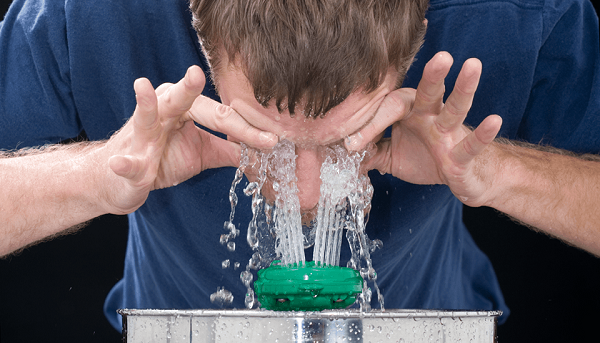Safety Eyewash Station: Frequently Asked Questions
After a person’s eyes have been exposed to a hazardous substance, the body needs the complete assistance of the rational mind in order to deal with the critical situation. However, that person alone is not enough to deal with this and a helping hand along with an environment that is equipped for the danger is very much needed as well. This is done by installing safety eyewash stations and by training the workers how to adequately make use of these units. Equally important, the safety eyewash stations need to be scattered around within close reach to every working area.
There are certain important guidelines that are to be known regarding these essential backup units that might as well serve as guardians of our most precious doors to the visual sensations – our eyes.

The Danger of the Delay – How Quick Should One Act?
The first 5-10 minutes after the eyes have been exposed to the dangerous substance, it is of utmost and urgent importance to wash as much as possible from the damaging liquid or gas. This is why the eyewash stations should always be within close reach, taking into consideration that the person in danger might be alone at the time. Except for washing away damaging substances from the eyes, these stations may also serve the purpose of washing off contaminating substance from the clothes, or extinguishing a small fire.
Who Should be Asked about the Basic Regulations about Safety Eyewash Stations?
Before installing these stations, one should make an appointment with the local health and safety agency that will give specific directions about the rules that are exclusives to your area.
What is the Right Kind of Equipment for Our Needs?
There are two types of equipment regarding the safety of the workers and it is recommendable to have both options implemented and available. Emergency showers – which can help if contamination of the clothes occurs, or if a piece of clothing catches fire. Also, the workers will be able to remove whatever substance has gotten on their bodies. Then, we have the obligatory eyewash stations which are different from the emergency showers because they don’t comprise water running with high pressure that can damage the eyes. There is also the option for self-contained and safety eyewash solutions, but keep in mind that the fluid should be changed often and kept fresh, and remember the limiting aspect of the container. The self-contained, portable safety units are useful, however they shouldn’t be viewed as a replacement of the real thing.
What is the Right Water Temperature?
The standard practice recommends that the water temperature should linger between 16-38°C. If the temperature exceeds 38°C, then it can interact with the chemicals and seriously damage your skin.
How to Properly Maintain the Safety Stations
For the purpose of preventing system breakage, proper maintenance must be applied. The best and by the books way to do this is to inspect regularly for valve leakage, fluid volume, clogged openings and lines. Keeping work record and having replacement parts near the working area is also a must!







